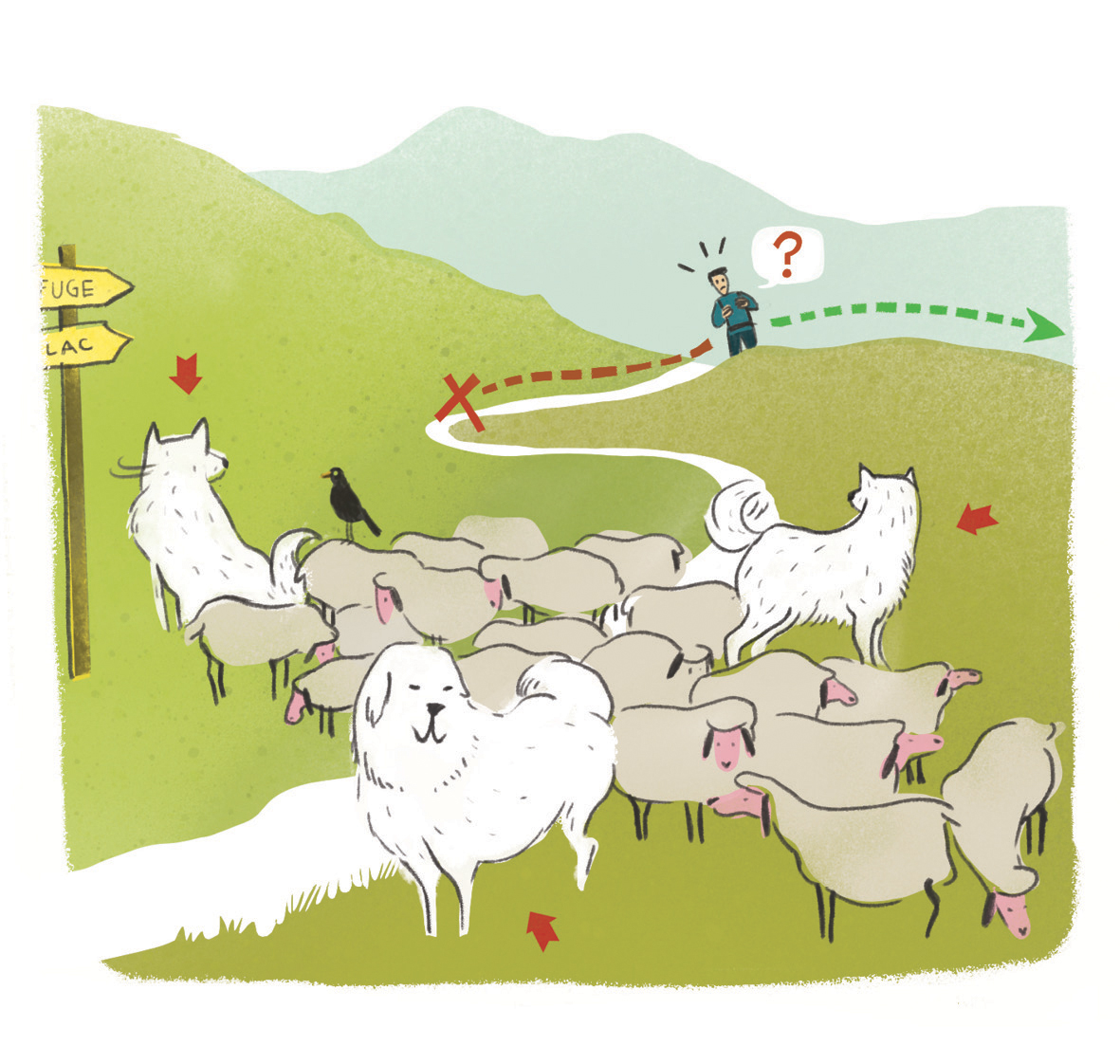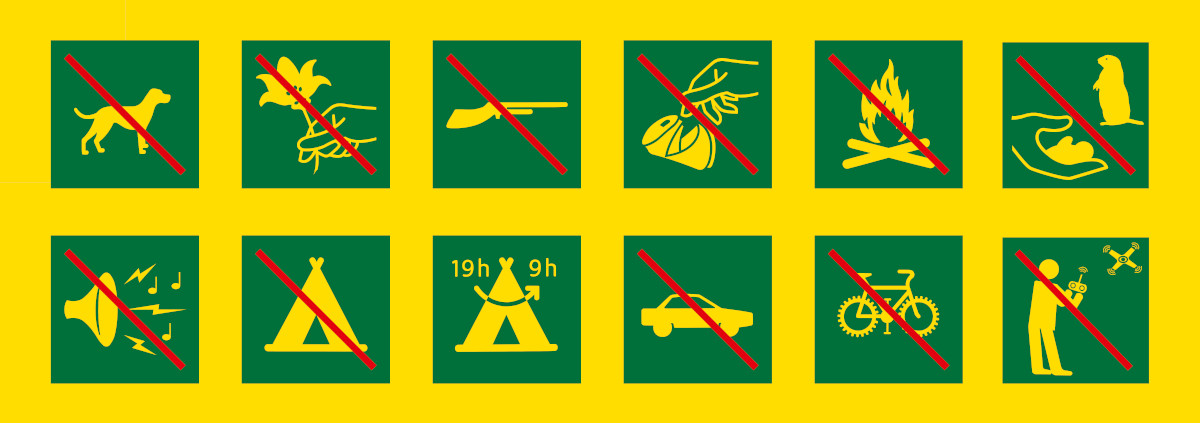Lac des Pisses
This winding trail overlooks the Prapic valley and runs as far as Lac des Pisses, in a rocky high-altitude atmosphere. It crosses several torrents and is a chance to enjoy the refreshing waterfalls.
14 points of interest
 History
HistoryPrapic Church
Dedicated to Saint-Anne, Prapic Church dates back to the 1860s. It was built following the request of the inhabitants for a place of worship, who were faced with the hazards of winter and the distance from the parish church in Orcières. On the stained glass choir window, you can admire the portrait of Prapicois: Jean Sarrazin (1833-1914), nicknamed the «the poet of the olives", a different poet from that in the tomb ... Can you find it?
 Architecture
ArchitecturePrapic Hamlet
Surrounded by vegetable gardens, piles of stones and mown terraces the village nestles on the banks of the Drac and gives the best land over to agriculture. The typical house is most often perpendicular to the slope, based on an architecture created from materials collected locally and showing great intelligence in its elaboration. From course plasterwork to the delicacy of walnut wooden doors, shale roofing with gables made from plaited alder, this is the architectural vocabulary that punctuates your visit.
 History
HistoryRunning water
Running water came to Prapic in 1924. The first pipes were made from metre long sections, hollowed out trunks of larch. Their fitments probably did not enable all the water collected from the six village fountains to be transported!
 History
HistoryLast Bear
In Blaisil valley, near to Prapic, the last bear in the region was slaughtered in 1895. This species had disappeared progressively between the 19th and the middle of the 20th century. In the French Alps, its disappearance is due to its classification as a harmful animal by the legislator in 1844. However, the reduction of its territory due to human activity also contributed to its disappearance. Its reintroduction in the Pyrenees is a controversial subject.
 History
HistoryVotive Festival
In the memory of the inhabitants, the votive festival for Saint-Anne has been celebrated for generations in Prapic Chapel. Previously it was celebrated in the old chapel situated at the top of the valley, but in 1870, it burnt down. Every Sunday following the 26th July, the faithful pay tribute to Saint Anne, mother of the Virgin Mary. However votive festivals are traditionally organized in order to answer a wish or to give thanks for a miracle.
 Architecture
ArchitectureBarn gable
In a poor country, ingenuity is increased. How do you close the gable of the barns while letting the air in to finish drying the hay without having to spend too much money? There are several examples here of the techniques used.
 Architecture
ArchitecturePrapic
Prapic, at the foot of the Charnière plateau, is the most famous of the 23 hamlets of Orcières commune. You just have to look upwards to appreciate the richness and the quality of the architecture of the dwellings. The large Champsaurines houses have kept all their character here when the corrugated metal has not replaced the Prapic slate.
 History
History"Tadpole" trees
The fodder distributed to the livestock during the winter is a precious commodity. To increase their supplies, the mountain dwellers use everything they have. In Autumn, before the leaves fall, the breeders cut branches from trees (ash and maples) and make bundles of wood. These will be treats for sheep and goats! This explains why the trees here have big heads... They are known as « tadpole » trees.
 Fauna
FaunaYellow billed Chough
A whirl of black birds moves noisily along the edge of the mountain wall before landing on a heath covered with juniper bushes. Dozens of them in a joyful rumpus, the Yellow billed Choughs feed on the berries left in winter. Real acrobats, they are capable of breathtaking aerial demonstrations. This ease of flight enables them to travel daily from places of high altitude spending the night there in holes in the rocks, to the bottoms of the valleys where they often find food near to the villages. This small member of the Corvidae species is protected and is on the regional red list because its natural habitat is very localized.
 Fauna
FaunaDung Fly
The Dung Fly is a difficult name to bear for such a pretty insect with a golden body! You can often see it on a fresh cow pat or a pile of manure, busy hunting or reproducing on the warm matter. With 240 million years of evolution, it is an expert in "aerobatics". It has 360° vision and it can locate an odour from a distance of several kilometers.
 Fauna
FaunaSmall Tortoiseshell Butterfly
Precocious, the Small Tortoiseshell is the first butterfly to visit the flowers that have only just come out through the snow. Its caterpillars feed uniquely on nettles where you can see them gathered together with two yellow stripes on their backs. The butterfly has bright orange wings on top, incrusted with ebony and edged with blue lunules ringed with black.
 Water
WaterBlaisil torrent
Blaisil torrent is the addition of two torrents one from Pisses lake and the other at Estaris. These two lakes situated at an altitude of 2500 m are accessible to walkers who set off early. But the effort is worth it: they present a remarkable setting and history!
 Geology and geography
Geology and geographyAncient Gravel Pit
Just forty years ago, the bottom of the valley was a sterile gravel pit, completely bare, where the torrent reigned supreme. Little by little, it became colonized and today the stones have given way to a forest. From time to time an avalanche makes sure that it kept is clear.
 Lake
LakeLake Pisses
The lakes were created in different ways. Lake Pisses was formed by the large glaciers of the quarternary age that carved out the softer rock as they advanced from Lyons to Sisteron. When the glaciers melted, 8000 years ago, these dips became lakes known as "basin lakes".
Description
From Place de Prapic, head up towards the stopover gîte, then turn left. A wide path crosses the fileds, then goes up the Blaisil valley. You pass by the Tombeau du Poète path. At the second crossroads, continue along the route to the right as far as Lac des Pisses. You follow the same route on the way back.
- Departure : Prapic, Orcières
- Towns crossed : Orcières
Forecast
Altimetric profile
Sensitive areas
Alpine ibex
- Impacted practices:
- Aerial, , Land, Vertical
- Sensitivity periods:
- JunJulAugSep
- Contact:
- Parc National des Écrins
Julien Charron
julien.charron@ecrins-parcnational.fr
Golden eagle
- Impacted practices:
- Aerial, , Vertical
- Sensitivity periods:
- JanFebMarAprMayJunJulAug
- Contact:
- Parc National des Écrins
Julien Charron
julien.charron@ecrins-parcnational.fr
Recommandations
 In mountain pastures, protection dogs are there to protect the herds from predators (wolves, etc.).
In mountain pastures, protection dogs are there to protect the herds from predators (wolves, etc.).
When I hike I adapt my behavior by going around the herd and pausing for the dog to identify me.
Find out more about the actions to adopt with the article "Protection dogs: a context and actions to adopt".
Tell us about your meeting by answering this survey.
Information desks
Information centre of Prapic (summer only)
, 05170 Prapic
Information centre of the National Park and the Tourism Office of Orcières. Information, documentation. Sale of products and works of the Park. Free admission. All animations of the Park are free unless otherwise stated.
Transport
Shuttle service (must be reserved beforehand at the Orcières Tourist Office): Prapic-Orcières www.orcieres.com
Access and parking
In Orcières, on the D76, take the D474/Le Bignottes. Then continue on the D476/Les Fourrés turning slight right at the intersection to the village of Prapic.
Parking :
Source

Report a problem or an error
If you have found an error on this page or if you have noticed any problems during your hike, please report them to us here:


